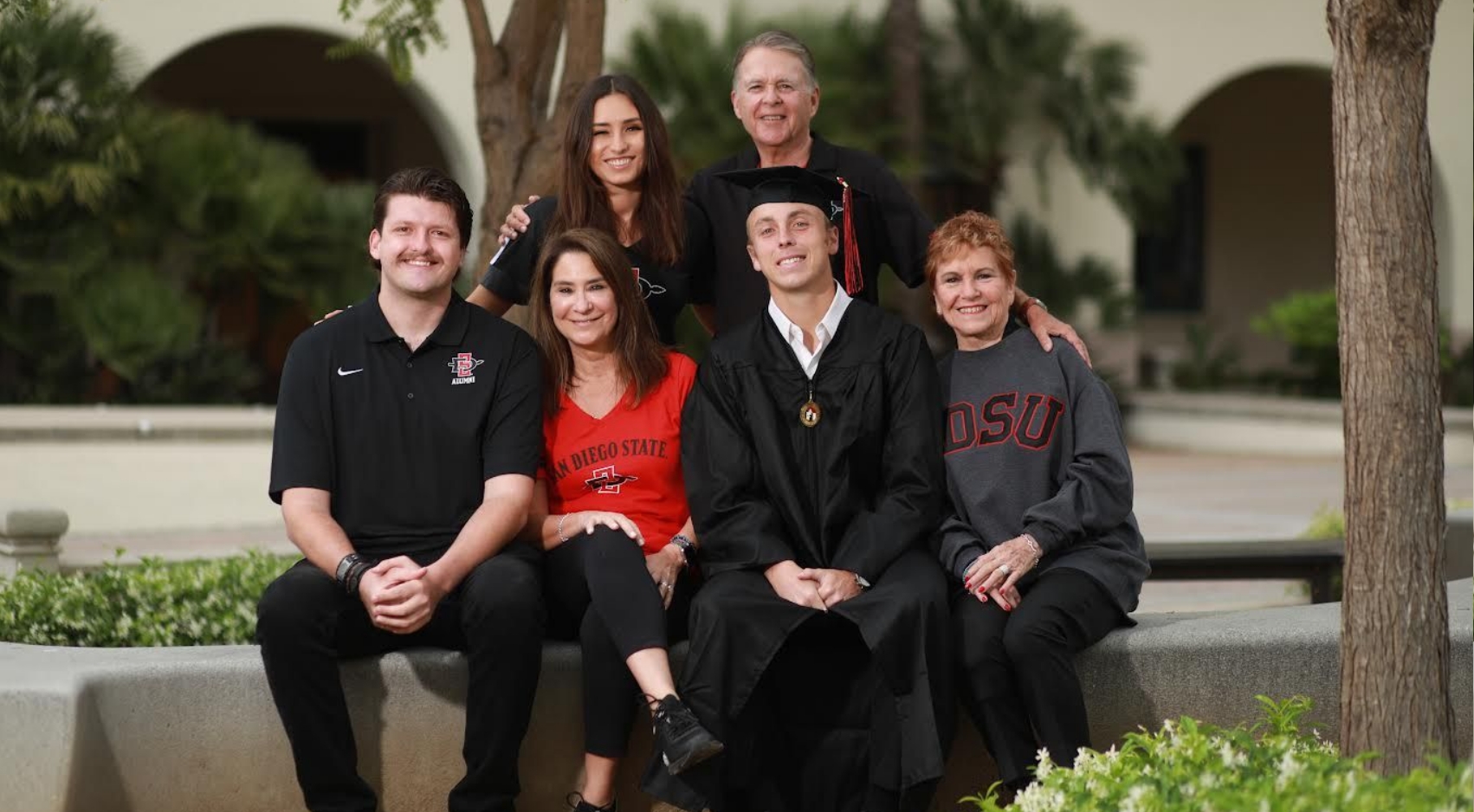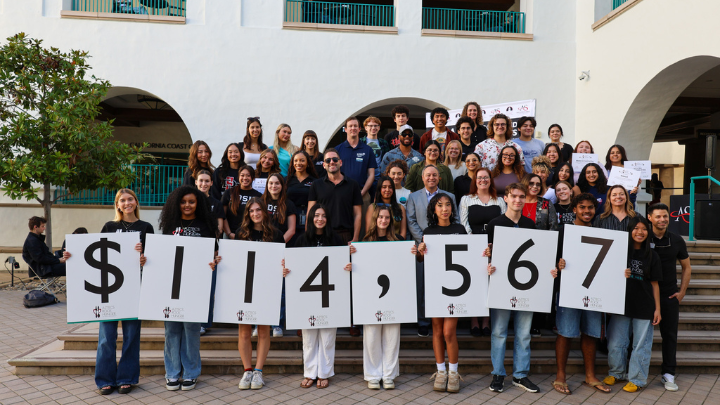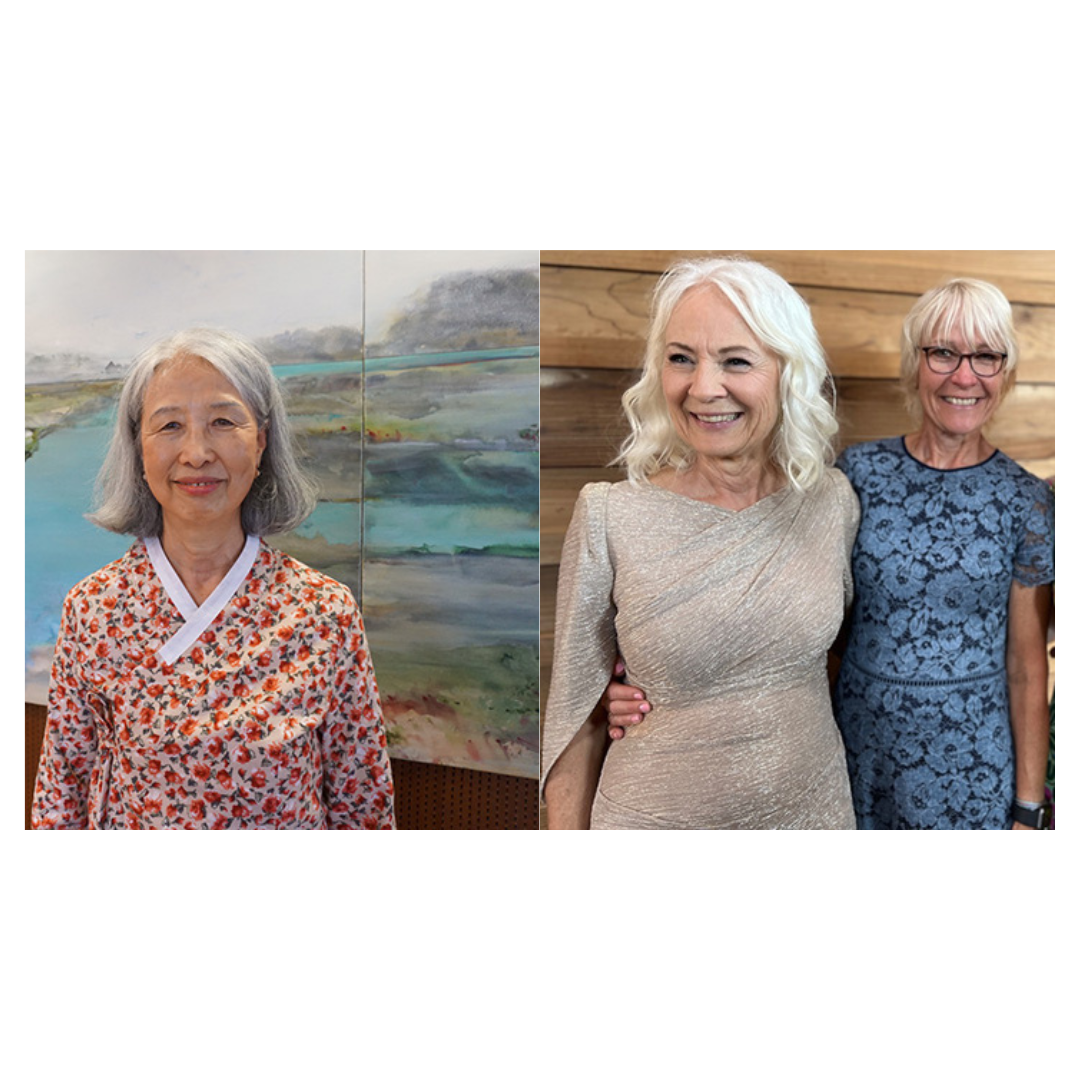Donor Support for SDSU is Strongest Ever
Meaningful giving helps generate a fourth consecutive year-over-year increase in donations.

Robin Luby ('61) and her late husband, Chuck ('59, '64), were always avid theater goers. For many years they had season tickets to San Diego State University stage productions which they enjoyed.
When Robin learned about the SDSU Performing Arts District renovation, she wanted to contribute, and asked about areas of need. As a University Relations and Development (URAD) staff member went over a list of possibilities, she mentioned to Robin the need to improve accessibility for disabled student performers to the stage and orchestra pit.
“That's when I said, yes, that's it,” Robin said during a recent phone interview from her home. “Instant recognition! They didn't have to sell it. I just knew it was right.”
Robin had learned firsthand about accessibility challenges when Chuck, in the later years of his life, had been confined to a wheelchair. To honor his memory and the couple’s longtime patronage of the performing arts at SDSU, she pledged $75,000 to install an elevator lift for disabled student performers between the stage and the orchestra pit at the Main Stage Theatre.
MEANINGFUL GIVING
Donations like Robin Luby’s are part of the reason SDSU received $136 million in gift commitments over the past fiscal year, the most successful ever for philanthropic support for the university. The total represents an increase of roughly 2.1% over the previous year according to SDSU Vice President of URAD Adrienne Vargas.
The new record marks the fourth consecutive year of philanthropic growth at SDSU. The numbers reflect support from gifts of all types throughout the university.
In the past year, areas generating the most support include athletics and the Fowler College of Business. Increased support for Student Affairs and Campus Diversity resulted from a couple of significant gifts, including a donation from a current parent who funded a training program on inclusive teaching for faculty.
“We are a donor-centric organization, so we believe that people will make the most significant gifts if they are supporting an area that is meaningful to them,” Vargas said, “and this was important to this donor.”
DONOR RETENTION AND RECOGNITION
Some donors, Vargas said, want to know about SDSU’s institutional priorities. “They have the ability to support whatever the institutional priorities are, and we try to match those with their areas of interest.”
In almost all cases, “Everybody wants to make a difference in the lives of our students,” Vargas said. Her URAD team is achieving success by making that happen.
SDSU is above the national average for donor retention. The university takes great pride in recognizing what are known as “SDSU loyals,” donors who have many consecutive years of giving. It is a group that is growing.
“We have very loyal donors because we focus on what their gifts are doing,” said Vargas. “They feel like they are getting some return on their investment.”
Donors who invest in scholarships, for example, meet the students they are supporting, and receive updates on how those students are succeeding. Often, the donors are inspired to support more scholarships.
Those who invest in research are shown the progress of that research, and frequently want to take it to the next logical step through their continued investment. “It’s paying attention to and sharing the impacts of their giving,” Vargas said.
OPENING DOORS
The Lubys have supported SDSU for decades in a variety of ways. In addition to being a major donor, Chuck was SDSU Alumni Board of Advisors president from 2006 to 2007. In 2010, the couple became SDSU Heritage Society members by making a $4 million planned gift from their estate to the SDSU Library.
Chuck’s mobility challenges were never something that Robin expected to inspire a gift. However, “seeing what he could do and could not do in a wheelchair really brought home what it meant,” she said.
The Main Stage lift, she believes, will help open doors in the future for mobility-challenged students. “My hope is that it will allow people who have the aspiration to be involved with the performing arts to find themselves the career that they desire or the enjoyment that they are seeking out of life.”
The man she describes as her “soulmate,” she said, would approve.
“Chuck would have loved knowing it was there. Because he loved theater as much as I did, I am sure he would be ecstatic to think there are other people who would be able to use the facilities with their interest in theater who wouldn't have had access otherwise.”



